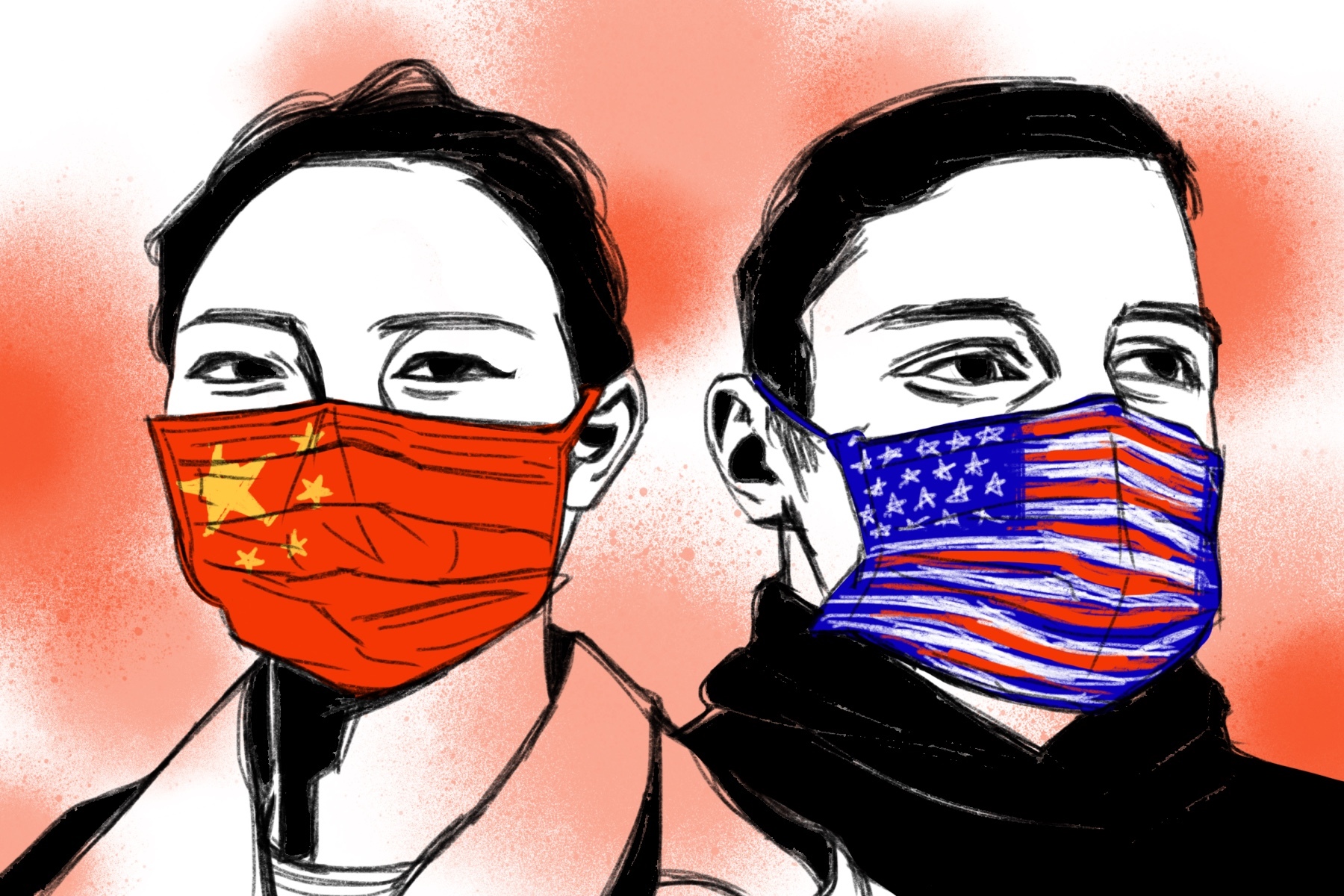The spectacular immensity of Chinese New Year celebrations is always a sight to behold. Enthusiastic crowds wash over the urban cores of China’s megacities, celebrating the turning of a symbolic new leaf that will hopefully usher in prosperity and progress. This spirit of unwavering ecstasy defined the New Year’s celebrations on the night of Jan. 25, 2020, and few in the world’s largest nation could have predicted the coming dissolution of normalcy. In a matter of weeks, most countries would be consumed by a rapidly spreading pandemic with a death toll now approaching 5 million people.
Nanfu Wang, a Chinese documentary director who first gained widespread critical praise for her 2019 film, “One Child Nation,” was one of the many millions who made the pilgrimage to the crowded streets of China to witness the New Year’s fanfare. Wang, a resident of New Jersey, traveled with her young son to China in January on what initially appeared to be a standard return trip to her motherland.
In the midst of their frenzied escape, Wang decided to begin compiling footage and interviews of citizens that were impacted by the outbreak, creating the backbone of her latest documentary, “In the Same Breath.” A film that weaves together the stories of patients, medical professionals and the courageous few who put their safety on the line to spread the truth about the outbreak, her masterful account of China’s mishandling of the virus is one of the most heart wrenching yet necessary documentaries in recent memory.
“In the Same Breath” is undoubtedly a documentary about COVID-19, yet it is chiefly a record of the dangers of minimizing human tragedy. Issues of censorship, nationalism and administrative failure are the predominant pillars of the film’s message, themes most recently illuminated by the pandemic but ones that have always lurked below the surface of authoritarianism. The pandemonium that Wang uncovered due to her diligent probing is a world that the Chinese government is desperately trying to hide. Throughout the early months of the pandemic, the Chinese government’s statements on the virus’s transmissibility, death toll and its impact on health workers were consistently riddled with mistruths that were only later exposed by international examinations.
The film’s initial chapter begins by looking at the helplessness of the Wuhan residents that were caught in the crosshairs of government suppression. Wang serves as the film’s narrator, continually guiding her audience through her exploration of the outbreak and the people whose stories she feels compelled to tell. Within the first few minutes, a montage plays containing social media posts made from early patients, sharing their symptoms in the desperate hope that someone would see them and be able to offer help. There is a moment to reflect on the certainly grim fates that await this unfortunate population, though Wang does not let the audience revel in their pondering for long.
Thanks to a small crew of bold camera people, the film surges onward into a gripping sequence of the interior of a Chinese hospital following the outbreak. The crew was given permission to film in a limited capacity and found mostly unwilling interviewees who were visibly uncomfortable with speaking openly about their experiences with the hospital’s procedures. The few moments the crew was able to capture tell a horrifying story of indifference toward suffering, with one scene showing the parent of a patient getting into an argument with a nurse over being allowed to visit with his dying son. “In the Same Breath” is filled with moments of individual hardship, and its construction is entirely dependent upon the diverse stories of loss and acceptance it shares.
One of the individuals Wang interviews is Chen Runzhen, a middle-aged woman who was forced to bury the ashes of a family member due to the inflexible policies of a funeral home. Her demeanor and tone of voice are burdened by sorrow, and during much of her interview she appears to be on the brink of emotional collapse. Though her body is plunged in grief, the understanding that she is expected to remain loyal and toe the party line possesses her speech. Holding back tears, she blurts out, “We’re so lucky to be Chinese. I feel wholeheartedly grateful!” The reality that her raw grief must be saddled with ideology transforms an otherwise brief segment of the film into a fundamental meditation on the unwavering, compulsory façade required of her and the millions in her country that carry their crushing agony in silence.
The film makes clear the government’s efforts to control the story by showing brief segments of jubilant propaganda shorts with titles such as “Chinese Doctors – Angels in White” that serve as incessantly optimistic tools to revise history. The shorts extoll the virtues of the Chinese Communist Party in defeating the virus with heroic measures on the part of the people, an exclusively upbeat narrative that completely sidesteps any mention of the loss imposed by the outbreak.
“In the Same Breath” also includes footage of a local demonstration that celebrated the medical professionals of China, complete with elaborate decorative imagery that invokes the greatness of Xi Jinping and his regime. Even in the polished display of strength in the face of adversity, the camera zooms in on one woman in the crowd with tears in her eyes, quietly projecting the sorrow of the many whose pain has been ignored. Mass media plays a crucial role in the dissemination of information, and Wang makes sure to depict the frightening consequences of misleading news that is propagated by the state. One of the most powerful sequences of the film sees multiple state-run news networks simultaneously utter the same exact warning about the illegality of “spreading rumors” about the outbreak’s severity.
The majority of “In the Same Breath” is an analysis of the Chinese government’s mishandling of the pandemic, yet the film demonstrates that the failure to address the gravity of the outbreak was not unique to the nation’s one-party system. The film briefly transitions to depict the response to the outbreak in the United States, beginning with press statements from the White House and Dr. Anthony Fauci offering incorrect information about the virus and the danger it posed to North America.
Wang interviews a handful of medical professions in the Greater New York area, with each sharing their personal disgust at the inadequate training they were given in early 2020. Each interviewee is overcome by emotional outpourings at some point in their conversation, and their inability to suppress the haunting memories of their day-to-day work creates a chilling appreciation of their courage. As a conclusion to its chapter on the United States, the film shows footage from anti-mask and anti-lockdown protests held in major cities across the nation. As a filmmaker who has lived in both nations, Wang draws an essential comparison between the harmful suppression of information in her home nation and the dangers posed by widespread false information in her adopted home.
It is impossible to discuss “In the Same Breath” without mentioning its score, a chilling soundscape that sends shivers down one’s spine long after the credits finish rolling. Nathan Halpern, a composer who specializes in film scores, crafted a tense and enthralling soundtrack that washes over the viewer periodically during moments of heightened tension. The unnerving tones that spring into the landscape shots capturing empty urban scenes eerily accentuates the unnerving paralysis forced upon an entire nation. There are moments of relief from the unnerving orchestration, though the minutes that lack Halpern’s dramatic orchestral mood are filled with the unsettling tones of beeping medical equipment or painful silence that mirrors the unspeakable horrors of the tragedy.
Wang concludes “In the Same Breath” with a chilling revelation that emphatically punctuates the tragic unraveling of normalcy captured in the film. Over clips of towering skyscrapers adorned in patriotic red light for New Year’s Day in 2021, audio of news anchors and political pundits details a global rise in the popularity of authoritarianism.
The figures explain that one of the largest driving forces of the political trend is the widespread belief that China’s policies effectively minimized the spread of COVID-19, a misconception that the film has dedicated itself to debunking up until this moment. The broad acceptance of China’s false narrative frames “In the Same Breath” as a necessary vessel for truth. The film is brimming with images and words that attest to the specific physical traumas of the pandemic, yet curating loss to document the outbreak’s consequences is not the film’s ultimate purpose. Wang wants the audience to remember a lesson that transcends COVID-19: Sometimes a lie can be the most dangerous infection.

















